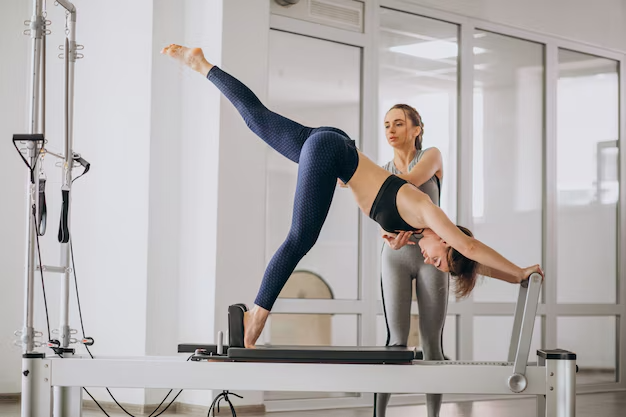
When it comes to Pilates, the Reformer offers an expansive playground for exploring movement, balance, and strength. One exercise that truly encapsulates these elements is the arabesque. This graceful yet challenging movement not only demands your full attention but also offers insight into the flexibility, balance, and alignment of the body.
The Challenge of Balance and Flexibility
The arabesque on the Reformer is, without a doubt, a balance-challenging exercise. As you extend one leg behind you while balancing on the other, your body's ability to stabilise through the centre is tested. Flexibility, particularly in the hamstrings and hip flexors, plays a significant role in how the arabesque looks and feels. However, it's important to remember that the aesthetic of the movement isn't the goal—rather, it's the control, alignment, and engagement throughout the exercise.
One thing I've always advocated in my studio is the removal of mirrors. While mirrors can be helpful for self-correction, they often lead to an overemphasis on what the movement looks like rather than how it feels. In my mind, my arabesque is always larger and more graceful than what the mirror reflects back to me. This internal disconnect can sometimes detract from the real purpose of the exercise—connecting with your body and understanding its limitations and strengths.
The Pelvis Debate: Square or Rotated?
A common question with the arabesque on the Reformer is whether to keep the pelvis square or allow it to rotate to achieve a higher leg position. This is a nuanced issue, and the answer largely depends on the client's needs and goals.
Maintaining a square pelvis generally promotes better alignment and stability through the centre. This approach encourages the body to engage in a way that supports overall posture, making it a good option for most clients, especially those new to the exercise or those who need to focus on alignment.
On the other hand, dancers or clients with a high degree of flexibility may find that rotating the pelvis allows for greater expression in the movement. However, this rotation must be approached with caution. The body in front of you must have the necessary control and engagement through the centre to avoid compromising the integrity of the movement. When done correctly, rotating the pelvis can add a dynamic quality to the arabesque, making it an excellent variation for those who can maintain stability while exploring a broader range of motion.
Other Considerations and Benefits of the Pilates Arabesque
The arabesque on the Reformer isn't just about the leg lift—it's a full-body exercise that requires strength, coordination, and mental focus. The movement challenges the supporting leg to stabilise, the core to engage, and the upper body to maintain a long, lifted posture. It's also a fantastic way to assess a client's overall balance and flexibility while providing a platform to build upon these elements.
Incorporating variations such as changing the angle of the footbar or adjusting the resistance can add different dimensions to the exercise, making it more accessible or more challenging depending on the client's ability.
Final Thoughts
The arabesque on the Reformer is a beautiful exercise that bridges the gap between Pilates and dance. While it's not suitable for beginners, it offers a wealth of benefits for those ready to take on its challenges. As Pilates teachers, our role is to guide our clients through these movements with an understanding of their individual needs, ensuring that every exercise supports their journey toward better balance, flexibility, and strength.
So, on this Movement Monday, why not revisit the arabesque with your clients? Whether you opt for a square pelvis or a rotated one, the key is to focus on alignment, control, and, above all, the joy of movement.

Commentaires